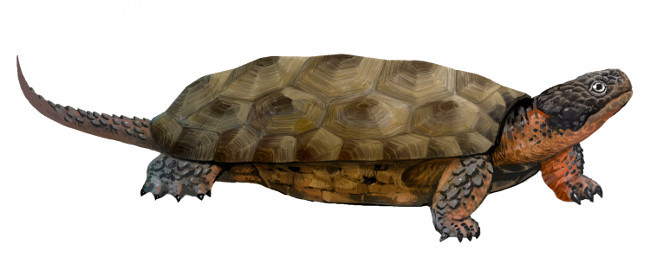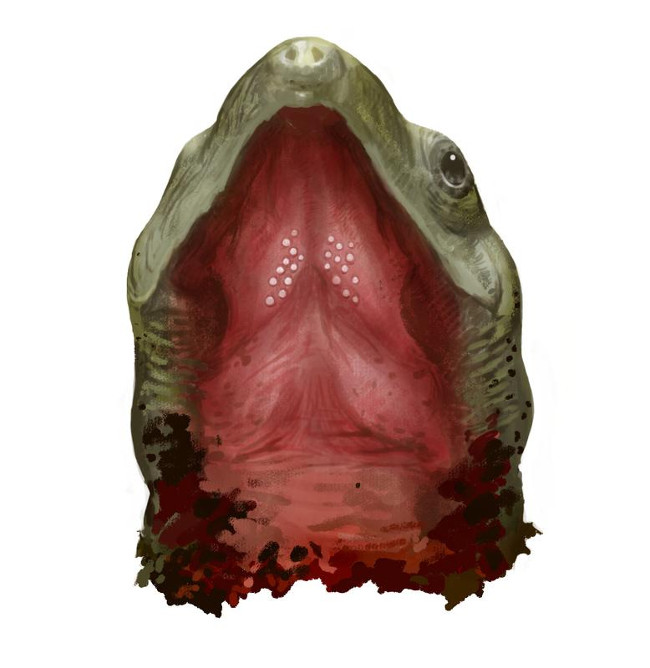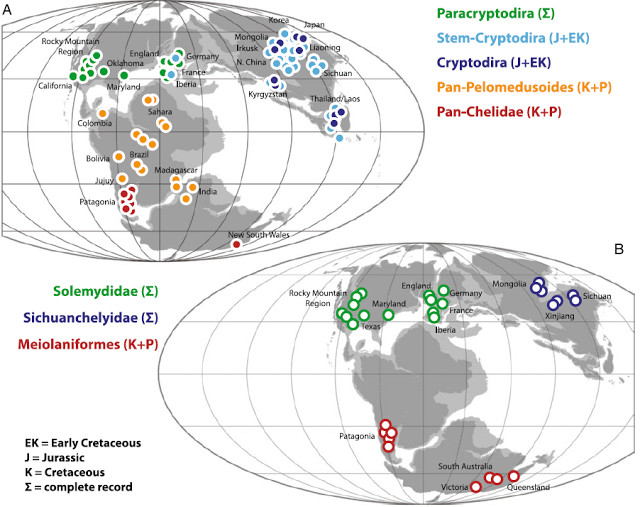Tooth turtles can last more than 100 million years ago
A new archaeological finding suggests that the tortoise can survive more than 100 million years ago compared to a few dozen million years ago.
Accordingly, a group of international researchers, including Dr. Marton Rabi from the Lab Biogeology Institute of Tübingen University, discovered the fossil remains of an estimated tortoise of about 190 million years old.

Ancient toothed turtles have appeared earlier than we thought.(Image source: Internet).
This is considered a new finding confirming that the ancient toothed turtle appeared earlier than we thought instead of the tens of millions of years previously identified. At the same time, this archaeological discovery continues to provide newer information, to reinforce the biological system of the chelonian turtle family millions of years ago.

The new fossilized turtle fossil was discovered in a Jurassic Wucaiwan land, in the Xinjiang autonomous region, China.(Image source: Internet).
The incident was discovered in a Jurassic Wucaiwan land , in the Xinjiang Autonomous Region, China. And this finding has just been published in BMC Evolutionary Biology.
Earlier, Dr. Walter Joyce from the University of Friborg, Switzerland found the fossil stone of a 30-million-year-old toothed turtle , named Sichuanchelys palatodentata , a turtle with teeth on the palate , estimated to be a turtle This inherited evolution from previous reptile ancestors. Now, however, this 30-million-year-old toothed turtle is no longer the oldest toothed turtle in the world.

The ancient turtles have evolved evolution quite clearly, classified by different areas.(Image source: Internet).
According to the analysis, the 190 million-year-old ancient toothed turtle has found a close biological relationship with the terrestrial giant tortoise named Mongolochelys efremovi who lived in Central Asia 100 million years ago. And these two lines of turtles began to disperse evolution, lost in the beginning of Trung Sinh period.
' Although turtles are not as highly dispersive as other animals, however, recent findings suggest that ancient turtles have evolved evolutionary quite clearly, classified by different regions ".
" The cause may be due to the impact of breakage, fracture of tectonic plates after the Cretaceous period, so each continent has a distinctive turtle species, as well as archaeological turtles archaeological sites. There are also differences in species and time of occurrence in continents . " - Dr. Joyce said in a statement.
- Huge giant turtle by car
- Humans have been cheated for hundreds of years by turtles without knowing
- The answer to the mystery of the evolutionary origin of the turtle
- Rare turtles were first born after more than 100 years
- Discover the tooth 5 million years of giant killer whale
- More than 75% of Vietnamese people aged 18-34 years have tooth decay
- The most exotic turtles in the world
- New discovery: Dinosaurs also have a mechanism to replace teeth
- Turtles have two heads and six legs
- Detecting mummies dying from tooth decay
- Spectacle of clogged turtles, queuing through strange bridges
- Hundreds of deadly Golfinas sea turtles are found in the Mexican coast
 Discovered an ancient centipede fossil 99 million years old
Discovered an ancient centipede fossil 99 million years old Discovered bat-like dinosaurs in China
Discovered bat-like dinosaurs in China Discovered a 200-year-old bronze cannon of the coast
Discovered a 200-year-old bronze cannon of the coast Discover 305 million-year-old spider fossils
Discover 305 million-year-old spider fossils